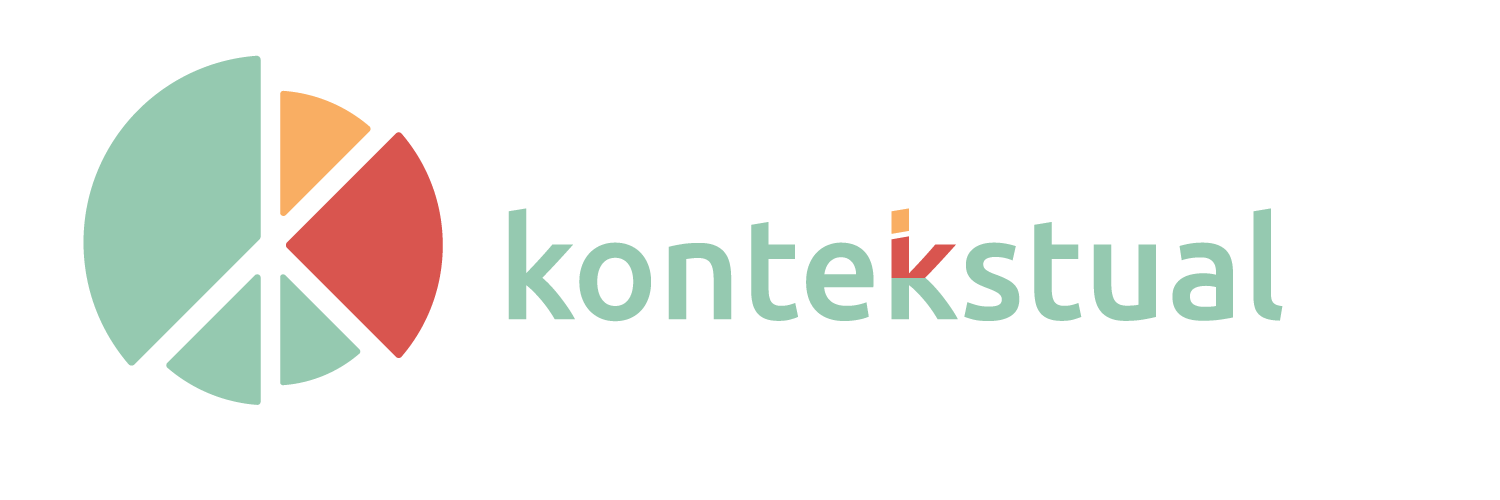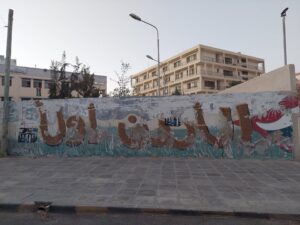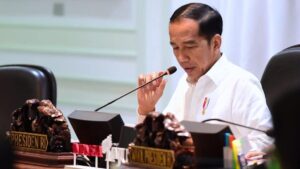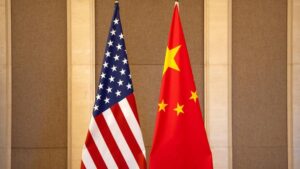Indonesia’s Looming Middle-Income Trap
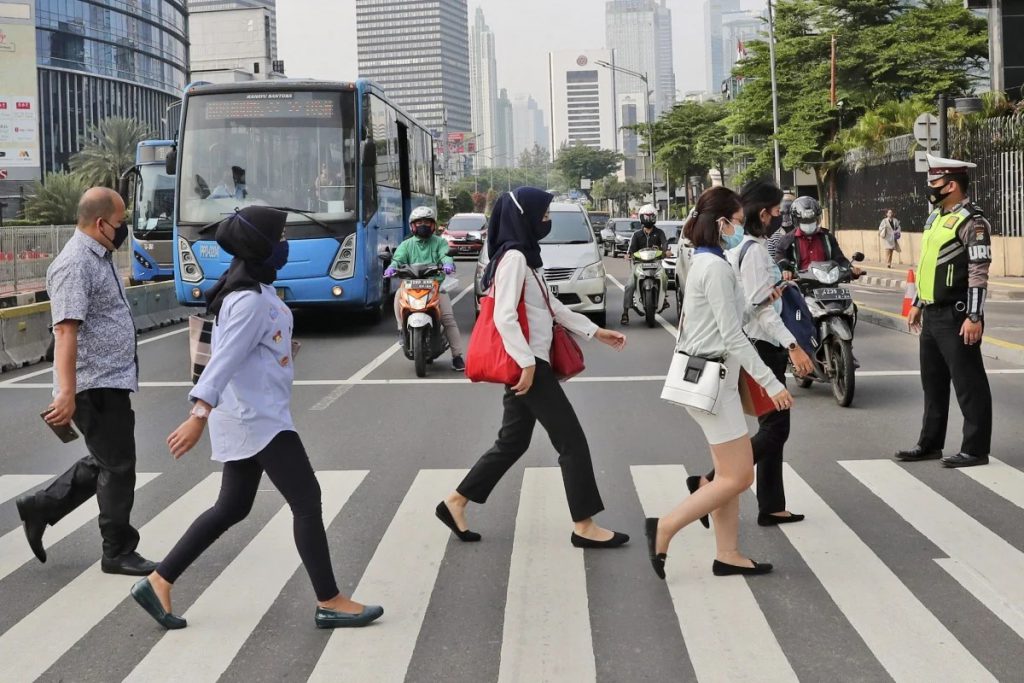
Illustration of Indonesian workers crossing the street. Photo: AP
Indonesia has been reclassified to the lowest category of a country with lower middle income. It is indeed inseparable from the COVID-19 pandemic that has plagued the country since last year. With a Gross National Income (GNI) or gross national income of US$ 4,050 per capita last year, Indonesia ranked among middle-income countries. Meanwhile, Indonesia’s GNI per capita is only US$ 3,979 this year. Along with the economic recession that lasted all of 2020. Indonesia has now aligned itself with several countries, including Belize, Iran, and Samoa. On the other hand, Mauritius, Panama, and Romania have dropped from upper to middle-income status.
The GNI categorization used by the World Bank to rate countries has altered. As the global pandemic is not over yet and the global economic recovery is going strong, it is uneven as many developing countries are still struggling with the post-recession. As a result, economic growth can be defined as an increase in the economy’s capacity to meet its requirements and wants over time. On the other hand, economic development is defined as “the process of improving the quality of human existence by rising per capita income, eliminating poverty, and boosting individual economic opportunities.”
Given the fact that the number of the workforce in August 2020 was 138.22 million people, there is an increase of 2.36 million people compared to August 2019. In line with the increase in the number of the workforce, the Labor Force Participation Rate (TPAK) also increased by 0.24 percentage points. The open unemployment rate (TPT) in August 2020 was 7.07 percent, an increase of 1.84 percentage points compared to August 2019 (Statistics Indonesia, 2019). Based on the income category, the near-poor and vulnerable to poverty are almost three times the number of people below the poverty line. The risk of this insecure population falling below the poverty line will be even greater during the pandemic and will reflect the risk of increasing the gap in economic insecurity.
Source: World Bank
Meanwhile, in 2019, Indonesia reached 52,8% of its insecure population when it reached GDP per capita. It shows that there are implications for income inequality, which causes most Indonesians to depend on their income and become more vulnerable. Indonesia’s insecure population should be given more attention by the Indonesian government because the growth of the middle class in Indonesia is the fastest, which is around 10% per year and accounts for almost half of national consumption. Additionally, Indonesia is the 8th contributor to the number of poor people in the world. If it compares with middle-income countries, Indonesia is the 4th contributor among other countries (Pande, 2021). This cannot be denied that poverty in Indonesia is still high while some instruments need to be concerned.
Changes in the global economy aren’t the only cause of rising economic insecurity. While the social impact of new advanced technologies, globalization of production and consumer markets, and accompanying economic upheaval has been significant, the shape of that impact has been substantially determined by policy decisions made in recent years. Efforts to expand social insurance coverage can help to alleviate the direct financial load on the government.
In that case, they must work in combination with measures aimed at increasing tax collections through greater formalization. If these all work together, a virtuous circle emerges in which a large proportion of the population is formally employed and contributing to social security arrangements while also paying more taxes, resulting in workers’ livelihoods being protected along with the government being able to spend more on tax-financed social protection for those who are unable to work (OECD, 2019). Besides, to avoid placing upward pressure on global food prices, officials should guarantee that growing inflation rates do not lead to a de-anchoring of inflation expectations, especially during the post-recession and the second wave of Covid-19 in Indonesia. Policies that focus on expanding social safety net programs, enhancing logistics, and increasing the climate resilience of local food supplies would be more beneficial. Social protection and high-quality public services also contribute to economic stability by acting as a safety net and automatic stabilizers, partially compensating for income losses during economic downturns.
Nonetheless, investing in social protection systems, mainly with the quality of education and ensuring that all people have access to them regardless of their age, gender, race, ethnicity, disability, origin, economic, migratory, or another status, will decrease inequality and promote inclusion (Jiménez, 2021). Even if Indonesia has downgraded to a lower-middle-income country, this could be a reflection and evaluation for relevant stakeholders, especially for policymakers, that there is a lack of quality and access to social protection for every layer of society. In addition, this indicates that Indonesia cannot always depend on the level of public consumption, especially with the pandemic where unemployment and layoffs are increasing.
References:
Jiménez, M. (2021, April 8). What triggers economic insecurity and who is most at risk? United Nations. Retrieved July 23, 2021, from https://www.un.org/development/desa/dspd/2021/04/economic-insecurity/
OECD (2019), Social Protection System Review of Indonesia, OECD Development Pathways, OECD Publishing, Paris, https://doi.org/10.1787/788e9d71-en.
Statistics Indonesia. (2020, December 23). Booklet Survei Angkatan Kerja Nasional Agustus 2020.
Badan Pusat Statistik. Retrieved July 23, 2021, from https://www.bps.go.id/publication/2020/12/23/d8b9a75ce826ddafbddb9657/booklet-survei-angkatan-kerja-nasional-agustus-2020.html
Dhea Sarah Valeska is a fresh graduate of Public Policy and Management UGM and currently a project-based consultant for government institutions. She can be found on Instagram with the username @dheasarah.
